Two BILLION pallets are used for transporting products every day. Many more pallets are lying around. It is no surprise that so many projects are made with pallets! At 1001Pallets, we have over four thousand ways to recycle, upcycle, reuse, or repurpose wooden pallets! But are those pallets safe to use? Many of you have questions about pallet’s safety and wonder if the pallets they found are Safe to use or not.
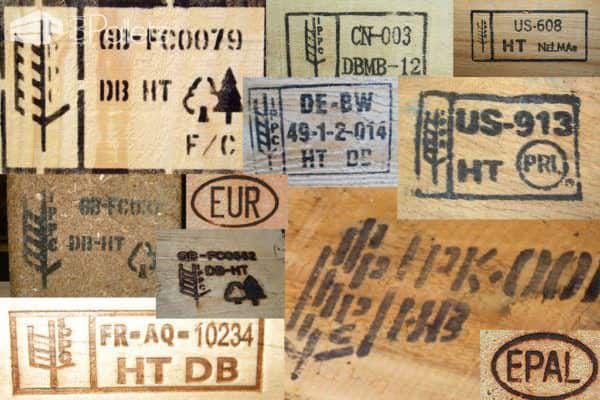
We tried to summarize the information we found. Pallets can become contaminated with chemicals spilled on them during the shipping process. If there are any spills on it, either oil, food or unknown substances, do not use this pallet! Pallets are frequently used to transport dangerous or toxic chemicals/liquids. It is much safer to use only clean ones and not try to identify what might be on your pallet.
Once you have found a clean pallet, the next step is to check for a stamp or marking on the sides of the pallet. Here is what we can tell you about those stamps:
When there is no stamp or mark on the pallet? Is it still Safe?
It means that it is a “national pallet“. National pallets are used for domestic transport within your country! Most domestic pallets are not treated with chemicals, so they should be safe. But you still have to be careful. Many crafters use these pallets safely, but it is better if you can trace from where they came. Sometimes you have to think about where you got them. Below is an example of a heavy-duty, oversized pallet used for shipping a new motorcycle. Check in with your local motorcycle dealerships as they commonly have “come and get them” days to dispose of the stack of crates and pallets. They are all brand-new lumber!
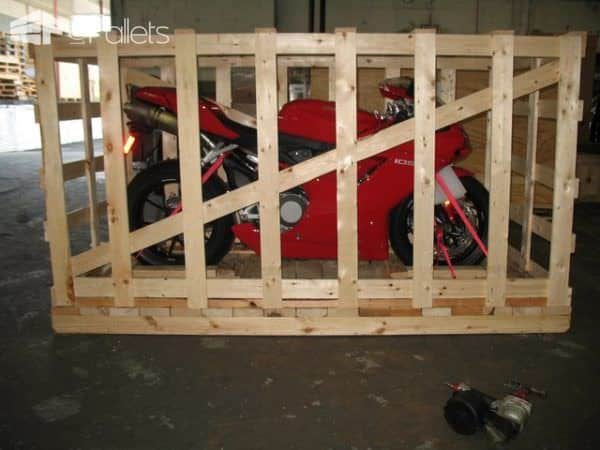
There are Safe local sources of new pallets!
Single-use pallets, such as for transporting a new motorcycle or new science lab equipment or other industrial equipment are frequently devoid of any stamps whatsoever. However, no one would want to pay 30,000 or more for a new motorcycle and have it sitting on a dirty pallet. The same applies to colleges or other facilities receiving new equipment. If you can find sources such as these, grab those pallets and get crafting! This information is provided by one of your administrators who watched her motorcycle being un-crated – and took the pallet/crate along with the bike. :)
International pallet stamps
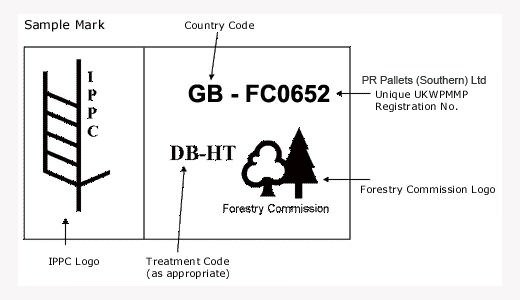
There are two main things to look for on the stamp!
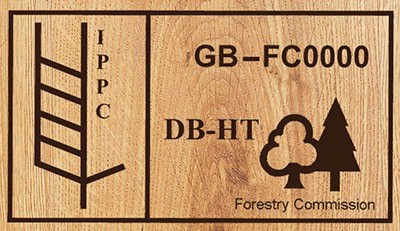
Avoid chemically-treated pallets to keep you and yours Safe.
The IPPC stamp: if you don’t see it, use it with caution! A pallet may be perfectly safe without this logo, but you don’t have clear information.
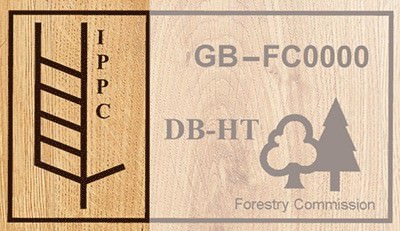
The treatment code : [HT] = Heat treatment / [MB] = Methyl Bromide / [DB] = Debarked / [KD] = Kiln Dried.
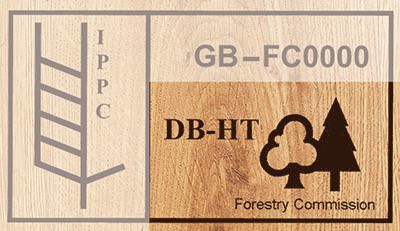
Above are the two most important information to check on the pallet stamp. Then, you have a geo-specific identifier. The first two letters of this identifier will indicate which country the pallet is from (as per ISO 3166), followed by a regional identifier and a unique registration number.
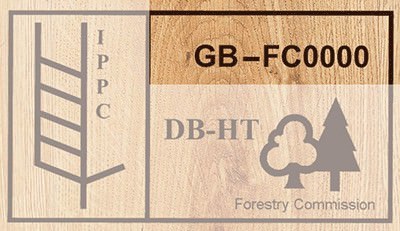
The IPPC marking on pallets is for International Plant Protection Convention (IPPC). IPPC marking on pallets are used for international shipping. These pallets are required to be made of a material that will not carry invasive insect species or plant diseases through different countries. IPPC standards require pallets constructed using raw wood to be treated. These pallets are treated with one of the methods listed below. Officially approved agencies supervise pallet treatment methods. A pallet may or may not be safe without the IPPC stamp. Stay safe; use pallets with stamps identifying clear sources!
Choose the Safe treatment method when upcycling pallets
[HT]: Wooden pallets manufactured in Canada or the US undergo a pest control treatment called heat treating (HT) which involves heating the pallet to a minimum core temperature of 56°C for softwoods and 60°C for hardwoods for a minimum of 30 minutes in a kiln. HT pallets are not harmful to your health.
[KD]: The purpose of kiln-dried lumber is to reduce the moisture content of the wood (19% or less). This coding system is a means to control warping, fungal growth, and other quality features. The kilns or ovens used to dry the wood do not necessarily reach the sustained temperature of 133 degrees Fahrenheit (56 Celsius) that would qualify as heat treated. Many lumber mills are processing their timber to meet the heat treatment requirements; thus you will see “KD-HT” incorporated in the wood grade stamp.
Don’t be fooled by that old appearance!
With cherry and oak wood, the curing temperature causes releases sap from within the wood. Sap coats the wood with a dark stain, making the pallets or crates appear old and worn. The heat treating process does not compromise the strength and durability of pallets and containers. KD pallets are not harmful to your health.
Note: 2013-13 CPM-8 adopted revised Annex 1 to ISPM 15 to include heat treatment using dielectric heating. New, used, previously assembled, repaired, or remanufactured wood packaging material is heat treated using dielectric heating the treatment code mark is DH.
Stay Safe and avoid MB pallets!
[MB]: Methyl bromide fumigation, this is a potent pesticide linked to human health problems and ozone layer depletion. Methyl bromide fumigation kills invasive species like pine beetles.
In 1987, the Montreal Protocol aimed to regulate the use of methyl bromide, along with multiple other chemicals found to impact the ozone. This type of treatment is now banned in Canada and many countries because it poses health risks to workers handling the pallets. However, you can still find it in some places. If you find an MB pallet (likely from Asia or Oceania), please do not use it for your craft projects or as firewood, find a waste-removal company that can dispose of it properly.
MB pallets are not Safe! Check out this information from Toxipedia:
Methyl bromide is a broad spectrum pesticide used to control pest insects, nematodes, weeds, pathogens, and rodents. In the U.S., methyl bromide has been used in agriculture, primarily for soil fumigation, as well as for commodity and quarantine treatment, and structural fumigation.
Methyl bromide can enter the body through inhalation by breathing air contaminated with methyl bromides, through the skin or the eyes. The symptoms of inhalation of methyl bromide are:
- abdominal pain
- convulsions
- dizziness
- a headache
- labored breathing
- vomiting
- weakness
- hallucinations
- loss of speech and incoordination
When skin comes in contact with methyl bromide, it can cause itching, burning, and tingling. Skin absorbs methyl bromide and it causes the following symptoms:
- redness
- burning sensation
- pain and blisters
When methyl bromide comes in contact with eyes, the symptoms are:
- redness
- pain
- blurred vision
- temporary loss of vision
Avoid “HIGHLY TOXIC” pallets! MB pallets are not Safe!
The EPA lists methyl bromide as “highly acute toxic“! Methyl bromide has not been used since 2005 in most countries. But, as there are still old pallets in circulation, we reiter our advice to not use MB pallets in any of your projects!
[DB]: These two letters indicate that the pallet is debarked according to IPPC regulations/stamps. Many pallets have this stamp. It does not matter if your pallet has this stamp or not. Many pallets do not have it.
The process of “debarking” wood is to remove the bark (rough outer layers of wood) using a cutting tool or a planer, and the pallet wood remains untreated. This procedure is done to allow for a more thorough treatment of wood before being approved for transport (aside from smoothing the wood). Pallets marked with the letters DB only are chemical-free and safe to use. Newer pallets no longer require this stamp by the IPPC regulations, as most modern wood treatment procedures require “debarking” as a standard part of their process.
Other Stamps – are they Safe?
Sometimes you come across other acronyms stamped on the pallets you find. This stamp indicates the name of the pallet inspection firm, a manufacturing company, or an uncommon type of wood. If you find a stamp you are unsure of and cannot validate, avoid using this pallet. Do an internet search to see if other people have come across it before. The pallet below was made in Slovenia (SI) by the supplier 341220. The pallet was Heat Treated (HT) and debarked (DB). The pallet was made in July 2011. This pallet is safe to use. For the international country code, visit ISO website.
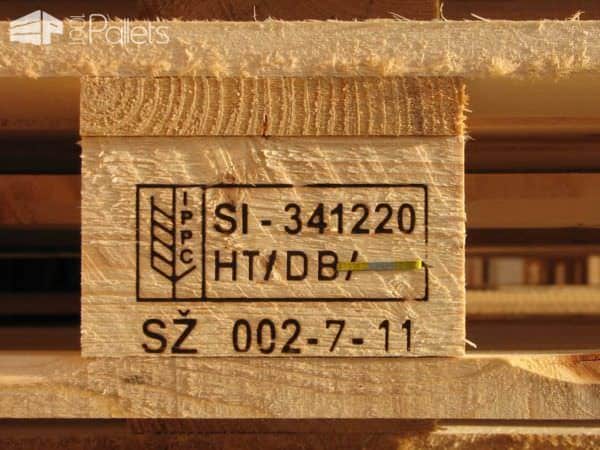
Sometimes you may also see the letters [PRL]; it means that the pallet is verified by the Package Research Laboratory (PRL).
There are three stamps involved in the Wood Certification Program under ISPM 15. Stay Safe and learn how to read those stamps on the pallets. There are updated standards by PRL.
HT Stamp – Heat Treatment Certification: This stamp must be found on all lumber purchased to build heat-treated wood packaging for international shipments.
WPM Stamp – WPM Certification: This stamp is required on heat treated wood packaging going into the international marketplace. It is applied on two (2) opposite sides of the finished pallet or container. If the package only shows the HT stamp, it will be rejected.
MB (Methyl Bromide) Stamp – Fumigation Certification: The NWPCA has developed a fumigation program to meet the compliance issue associated with exported shipments of WPM products, as required by the USDA Animal and Plant Health Inspection Service (APHIS). Fumigators will be required to enroll in the Fumigation Program and receive special training from the MB producer regarding compliant application for WPM products.
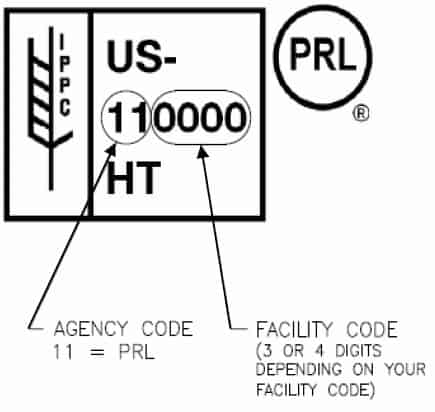
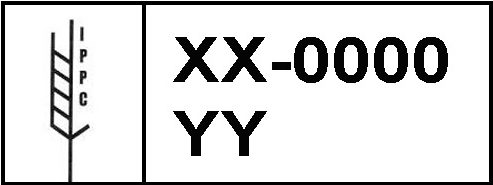
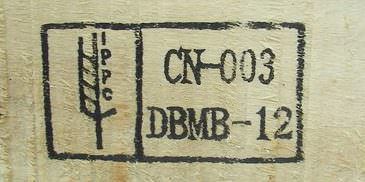
For Europe: Read the codes and stay Safe!
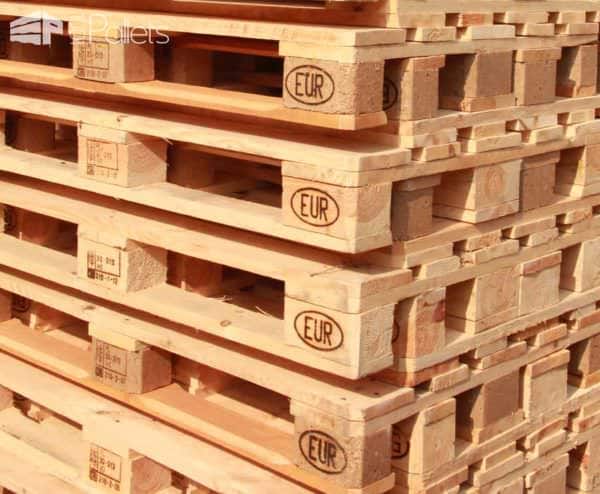
The same thing applies, but sometimes there are no other stamps than EPAL or EUR. You should choose the one with EPAL. The one marked with EUR comes from an old system managed by railways companies. If they are EPAL approved, they are okay to use. They are just heat treated (HT) the same way as described above. Europe does not allow chemical treatments. These pallets can carry 1500kg.
You may also find pallets without any sign on them. They are typically single-use pallets. The robust ones are those used for building materials (bricks, cement, etc.), science equipment, machinery, and similar. They are not treated with chemicals and are safe for reuse.
Many people ask where to find pallets! You may go to your nearest DIY store, home center, freight shipping company, or even search your local advertising (such as Craigslist, etc).
FOR CANADA: Here is a list of approved suppliers in Canada.
CP Pallet markings
The CP Pallets scheme was started in the early 90s’ by the German Chemicals Industry Association (VCI). So, the CP pallets are intended for the chemical industry only. They belong to the pallet exchange system, and they can be repaired as well. CP standards describe the wood quality, measurements, marking, and repairing. There are markings on pallet blocks where producer’s or repairer’s code, year of production, and possible date of repair are indicated.
Pallets can be heat treated according ISPM15/IPPC requirements and can be kiln dried as well.
For CP Pallets, they are nine possible sizes in total, so you’ll find “CP1, CP2, CP3, etc.…”:
- Five types of pallets (CP1 to CP5) are for the chemical industry.
- Four types of pallets (CP6 to CP9) are for the polymer industry.
Guidelines on CP Pallet markings: Chemical Industry Pallets
As the CP pallets are for the chemical industry only, we do not recommend to reuse them for any DIY pallet project.
Blue Pallets vs Red Pallets vs Brown Pallets? Are they Safe?
Pallets usually last from four to ten years. Pallet rental companies maintain them for reuse. Colored pallets usually come from one of these firms. Colored pallets (blue pallets, brown pallets & red pallets) are controversial. Rental companies own colored pallets. They don’t treat the pallets with methyl bromide. Rental pallets are sometimes used for international shipping, so there can be concerns! Some countries are fumigating all incoming pallets. Not every country is always compliant with international standards.
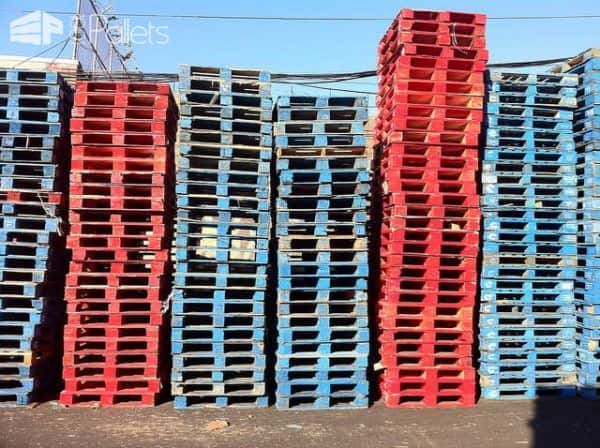
There are four main pallet pool companies in the world that you can differentiate by the color:
- Red pallets: pool LPR (La Palette Rouge from Europe)
- Red pallets: pool PECO (The Pallet Exchange Company from the USA – PECO pallets are constructed from high-quality lumber that is responsibly forested in North America. Pallets are kiln-dried to control infestation, mold, and moisture content. No chemical treatments or hazardous materials are ever used on PECO pallets, and all lumber products used to construct and repair PECO pallets are regularly tested by an independent third party inspector.)
- Blue pallets: pool CHEP (Commonwealth Handling Equipment Pool from Australia – Owned by Brambles, a world-leading provider of supply chain logistics solutions based on the provision of reusable pallets, crates, and containers for shared use by multiple participants throughout the supply chain.)
- Brown pallets: pool IPP (IPP Logipal from Europe – IPP Logipal is one of the leading pallet and box rental providers to fast moving consumer goods supply chains and to industrial sectors across Europe.)
Note: No chemical treatments or hazardous materials are used on PECO pallets (Red Pallets), and all lumber products used to construct and repair PECO pallets receive regular testing by an independent third party inspector. You can find more information at PECO Pallet. So, the red pallets from PECO should be safe to use for your DIY project.
Rental pallets are often used for international shipping, and while most countries use an NPPO/IPPC stamp marking on pallets, not all countries do. There is the possibility that some countries may not comply with standards.
Stay Safe when using ANY pallet
Remember that you should always use a mask to keep you from breathing in particles and pollutants (just as for any work involving cutting or sanding wood).
One of the most important things to remember is that when you cannot establish if the pallet you have is safe or not, DO NOT USE IT for indoor projects such as a headboard, coffee table, or another kind of pallet furniture unless it comes from a trusted source. In this case, only use it for outdoor projects where you will not be in contact with the pallet too often and avoid growing food on or near used pallet wood. For your safety (and your family’s), and for the sake of our planet, never use questionable pallet wood or treated lumber in your fireplace or outdoor fire pit.
1001pallets.com does not recommend using unknown or suspicious pallets for indoor projects such as cutting boards and headboards.
In the video below, Karell will explain to you how to find safe pallets and read pallet codes – what pallets you can use and what pallet you cannot.
source: pallet.tv
Here are some links of interest
That’s it; now you have all the necessary information to start you pallet quest! If you have more information on pallet safety, please contact us! We will update this page to provide information that may help you stay Safe.
To easily remember all the information and codes, here is a visual infographic, we hope it will be useful.
| # | Preview | Product | Rating | Price | |
|---|---|---|---|---|---|
| 1 |
|
Vestil SKB-DLX Deluxe Steel Pallet Buster with Handle, 41",blue | 3,688 Reviews |
$66.39 |
Shop Now |
| 2 |
|
Pallet Buster Tool with 41‘’ Handle, Carbon Steel Heavy Duty Deck Wrecker Pry Bar Puller Wood... | 44 Reviews |
$43.99
$40.99 |
Shop Now |
| 3 |
|
CFTEL Pallet Buster Tool, Heavy Duty Deck Wrecker in Yellow with 43"Non-Slip Handle, Powder-Coated... | 38 Reviews |
$62.99 |
Shop Now |
| 4 |
|
BISupply Pallet Buster Tool with Handle 3 Section 41in - Deck Wrecker Dismantler Wood Pallet Tool... | 795 Reviews |
$45.99
$39.99 |
Shop Now |
For Australian readers, please read this message sent by one of our readers from Australia
Please inform your Australian readers that some heat treated packaging entering Australia is being fumigated with methyl bromide. I recently got some large shipping crates from work that had heat stamps on all timber, so I assumed it was safe. However, I learned that wooden crates are treated with methyl bromide upon arrival to Australia. It turns out that Aussie Customs still use it quite a bit. I wish they would restamp it as such. I do not trust any imported pallet in Australia thanks to Customs.
One of our New Zealand readers informed us that pallets entering the country are also being treated with methyl bromide. If you are from New Zealand, do take care as well.
Other helpful resources
If you want to learn more about pallets, just read our article on the history of pallets and how they play a significant role in the history of our economy.
Need information on pallet sizes & dimensions around the world? Take a look at our article on this subject! If you want to know the wood used when making pallets, you can read our article “What wood are pallets made from?”.
If you need some tips and places where to find pallets, visit our Where to get free pallets? page, that will give you some advice and some areas shared by our readers.
Now, you have found your wooden pallets, and you have checked that your pallets are safe for re-use? The first step is to dismantle them, and you can check our seven methods to dismantle your pallets quickly with or without tools. Then, you will need to check if you have all the tools necessary for any pallet project and finally learn how to prepare your pallet for painting with this article on the 17 things you need to know before painting a wooden pallet. And to finish, if you want to learn more or find the best pallet jack or pallet truck available out there, check out our article Tips For Buying A Hand Pallet Truck & Our Reviews Of The 10 Best Pallet Jacks!

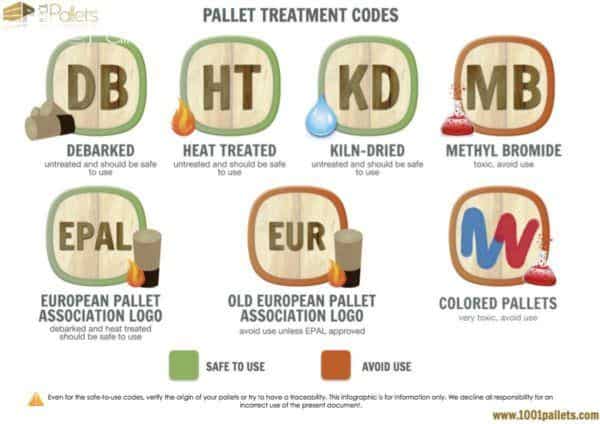
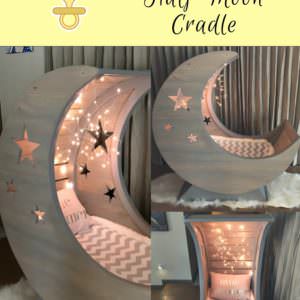
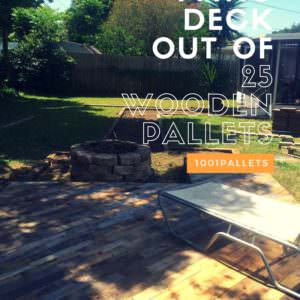
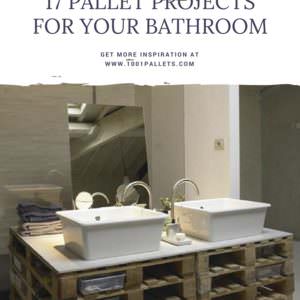

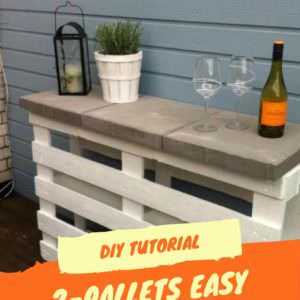
Hi. Is this safe to use for a raised vegetable garden? TIA
I have some pallets with a code I am trying understand. CI-017-DAB. I believe it is from the Ivory Coast but not sure what type of wood they used. It has a red tint and is hard and heavy. Any help would be appreciated. Thank you.
Hi, I have wooden crates with DB MB stamp on it, its from Malaysia and Im from the Philippines. I would like to re-use it to send some metal products to India, is it okay? Note that I bought the wooden crates from a Junkyard and I want to re-use it.
Hi I would really like to know what this code means on my pallet (fr-al-000975 ht). please reply I’m so curious to find this out, I’ve searched everywhere.
Hi, I have a pallet with “KM” mark. Is it safe to use?
I have a pallet, more of a trellis type than regular, cleaning looking wood, no stamp but just a small blue paint swatch and a reddish orange paint swatch on it. These swatches are small, maybe a square inch. What do these swatches mean and are they safe to use?
Hi,
I have a pallet that has the EUR and UIC stamp but it is HT. Is it safe to use? Thanks.
HT is safe, MB is not safe.
Hi! I’m thinking of buying these pallets to use for a vegetable garden, but I can’t quite tell if they’re safe. Can anyone advise?
I think you should contact the vendor and ask him what kind of pallets he used to build these vegetable gardens.
I have a blue pallet that has HT on one but I recently picked them up from Home Depot. I wanted to use it to build a bed frame. Should I avoid this as it is a blue pallet?
Yes you should avoid this pallet. A blue pallet means that it was chemically sprayed.
I have a question about the wood chip compressed bricks on some pallets, are they safe to burn?
I’d also like to know the answer to this. Are they just compressed, or are they bound together with any kind of glue?
Is there any more information about the use of Methyl Bromide for Australian customs? I have Heat Treated international pallets I want to use for garden beds but now i’m concerned based on what was said above. I have called multiple pallet recycling centres and nobody has any information or concerns about safety issues regarding this and some are even using the pallets for mulch and animal bedding. I’ve done quite a bit of investigating and my theory is that the amount used in this fumigation process upon entering Australia would be a lot less than the wood treatment process… Read more »
We have a pallet with VEMB stamped on it and then the stamp says KD HT DB.
It has a blue tinge (not paint) on the inside. Would it be safe as a vegie patch border?
Hi Dianne,
As it is marked as HT it is safe.
[HT] = Heat treatment
[DB] = Debarked
[KD] = Kiln Dried
You can use it for a vegie patch border.
I notice Dianne, did mention VEMB, does the MB not disqualify this pallet?
I had a pallet from feed & supply store built with minimal spacing & not typical size but fit perfectly as step up area to avoid large puddle when entering. After many years it rotted so threw away. Now there’s a perfect rectangular patch on concrete walkway where moss & molds never grow – even a year after removed pallet. This made me curious & why I found your site. Now I’m wondering what pallet was treated with that soaked into concrete & prevent mold or moss growth…definitely not a gas that dissipated. Don’t recall any markings but threw away… Read more »
Hi K C,
Thank you for your testimony, it’s interesting. Do you know if your wooden pallet was HT or MB treated? If it was MB treated, then it is possible that it may have released chemical products that prevent the regrowth of herbs and/or mosses.
Normally an HT treated wood pallet has no chemical treatment and therefore should not cause this. It would be very interesting to have this information if you remember it?
Are new hard wood GMA pallets safe to use in my home?
Hi Doug, Grocery pallet, GMA pallet, standard pallet — all are names for the common 48” x 40” pallet used over 90% of the time any pallet is shipped anywhere. GMA stands for the “Grocery Manufacturers Association.” This group established the standards in order to standardize racking and transportation for the grocery industry in 1908. The GMA standard pallet is constructed with high density hardwood, seven top deck boards that are 40 inches wide, and five bottom deck boards that are also 40 inches wide. There are three stringers that are 48 inches long, 3 1/2 inches tall, and 1… Read more »
I have a pallet with DPA and LV(I think O) with some green paint on it. Can anyone tell me if this is safe to use for a raised bed?
Per the EPA article “https://www.epa.gov/ods-phaseout/methyl-bromide” methyl bromide is being used for agricultural production and for imported commodities. My question is, if it is ok to use Methyl Bromide for agriculture purpose (actually Methyl Bromide is injected into the soil), why is it not ok to reuse the wooden material fumigated using Methyl Bromide for creating vegetable bed.
hola como estan .use unas paletas para las puertas de mi cocina y dicen lo siguiente tienen el logo del trigo ippc y del otro lado pl 02 mas abajo 308 y luego ht .imagino por el ht son seguras por su tratamiento termico .que significa lo demas
can you use heat treated wood for a bird house?
Hi 3ecca, if it is Heat Treated, yes you can use it for a birdhouse ;)
I have 20 pallets given to me that air conditioners were shipped in and wondering if they are safe?
it depends which stamps they have on. Can you see an HT stamp?
If we have pallets with any of the approved treated symbols in Australia, can these be reused and sent to New Zealand?
I am genuinely curious: 1. if MB is a “gas”, it will dissipate; question, a) does it ALL dissipate?, and b) how long does it take? 2. if in fact, trace MB remains in the wood, is there a diagnostic way to reveal? I have a SUPER figured piece, that I have had for a few years (never mind how old the actual piece is, i.e. when it was fumigated with MB)….I will “give it up” if I must, but must I?…..
Splendid site. Thank you!
Thanks Aaron! :)
A friend has a pallet she wants to give me it’s from Italy it shows HT (heat treated) then SFN. What does this mean n is it ok to use for strawberryies please?
Hi Anita, as the pallet is marked HT is should be safe. SFN should indicate the country of origin but couldn’t find this country in the ISO-3166 table… maybe it is SDN or SEN?
After installing a pallet wall should I need to put a coating of polyurethane on it and if so, what kind of finish is best? Thank you.
Are pallets used to transport car/ truck batteries safe to use?
Hi Ryan,
Not really as you don’t know if some batteries have leaked on it. You should really check how is the wood of the pallet before using it.
Would luv if someone could tell me if this pallet is safe. Painted blue, new ,and only info is SPIB.No.1
KD19-HT TRLcircled and🎄pic
Plz help TRL?? Tried looking up but got confused. Luv your site!!!
Hi Jennifer,
Yes your pallet should be safe, it is an heat treated pallet. But, as stated in the article: “Colored pallets (blue pallets, brown pallets & red pallets) are controversial. Rental companies own colored pallets. They don’t treat the pallets with methyl bromide. Rental pallets are sometimes used for international shipping, so there can be concerns! Some countries are fumigating all incoming pallets. Not every country is always compliant with international standards.”
So it should be good but check it two times.
Yes it should be safe, the code is “KD19-HT”, HT is for Heat Treated so you can use it ;)
Hi there do you know if pallets from Korea or Japan are safe for raised bed gardens those pallets are used to transport metal parts
Hi Aldi,
Do those pallets has the IPPC logo or the HT stamp?
i want to know whether there is a company in Tunisia provide IPPPC SAFE PALETTE
Hi Mohamed,
We don’t know, you should check with local authorities.
Hi I have a terrible dark rash after moving pallets at work, itchy raised. I have tied anti histamine cream aloe Vera plant, salon. Any advice?
Did you ever see a doctor? My guess would be contact dermititis from the type of wood.
From the NSW Timber Development Association:
Fumigation with gas involves enclosing goods and woodpackaging, pumping in the gas and leaving it enclosed for a period of time to allow full penetration. Gas is used as it penetrates into the wood and then dissipates,leaving no chemicals in the wood packaging. Methyl Bromide and Sulphuryl Fluoride are both acceptable fumigants.
I bought a few pallets from Toys R Us a few months ago before they went out of business. There aren’t any stains on the pallets and the only markings say Toys R Us followed by a 3 digit number that looks like a date. Should I use them or not?
I Just made a bed frame out of pallets and they smell super strong. Like wood, but Is that normal? I am in France and got them at a local factory because they were longer and they had the ippc stamp but there was blue in there’s and it says it’s from Taiwan and has Chinese writing on it. I just inhaled next to the bed and I ended up coughing up a storm so now I’m feeling a little paranoid about the safety of the pallets I’m using!
Bonjour Jaqui, à votre place je n’aurais pas utilisé des palettes bleu provenant de Chine, celles-ci sont en général traitées au Methyl Bromide, donc à éviter surtout dans une chambre !
the Pallet I got recently says “FR MP 01385 HT ” but has been labelled as EUR
can I still use them ?
If it’s an EUR pallet and with the HT stamp, you should be good to go ;)
Neokentin. But you said dont use any pallets stamped MP now I’m confused
@Laurie, not MP, MB (Methyl Bromide) shouldn’t be used. HT (Heat Treated) could be used. I don’t know what means “MP”.
Thank you for sharing that sap coats the wood with a dark stain, making the pallet look old and warn. I didn’t know that heat could treat this problem without causing harm! I am looking into getting timber skids right now. I just want to make sure if I do, I know how to take care of what I’ve got. Thank you for also sharing how to be safe with this type of product!
Pallets with no stamps: this portion of the article was very short and suggest that you have to think about where you got them. That really doesn’t help answer the question as I have read that pallets used to transport fresh fruit and veggies are treated with MB so in my mind a grocery store probably isn’t a good place…What are good places to get pallets that do not have a stamp. The ones i have came from a store that sells hardwood flooring and tile. Is this safe? See I would have thought pallets used for food shipping were… Read more »
Hi Stacy,
Where did you read that “pallets used to transport fresh fruit and veggies are treated with MB”?
MB pallets are forbidden in main countries, even more to transport food or fruits! When there no stamps on a pallet, we recommend to avoid it as you cannot be sure of how this pallet was treated and what this pallet has transported…
This is a great article very informative.
I have read up on how to choose a pallet….i get that but how do you know if it is safe to use inside……no bugs/termites. My husband has made several comments about having them outside and having to have someone come out and make sure termites don’t get in our home……he hasn’t had anyone here for years to do that. So how can I be sure the pallets are good. Anything I can soak them in? I want to do a wall with them, like panels but dont want problems. Can anyone help with thus?
You have to watch for the stamp on it. Don’t use anything stamped with “MB” – that’s an indicator that it’s been chemically treated. You’ll want “HT” stamps – heat treated. DB is just de-barked, so that isn’t of concern. If you read the full article, it’ll clarify most of your questions. But if you’re still worried, our advice is always – “When in doubt, throw it out.” You can always use our site for inspiration and use OTHER types of upcycled wood like old fencing, barn or shed wood, reclaimed wood from a house renovation, etc. – HS.
Hi Very interesting article. I was wondering if there is any way to know if the pallet is pressure treated if you have wood that has been broken down for use.
|Also does the chemical go deep into the wood or can you plane it down passed the treatment.
Thanks again for the info
Roy
Hello, This is a great article with a lot of really helpful information. The next time I’m looking for pallets I will remember this for sure! I spent about three days breaking down pallets, taking out nails, and disposing of the rest of the unusable lumber so I have absolutely no clue where my pallet wood is from nor how it was treated. I have a few interior projects I want to work on but now I am not so sure. As far as the MB treated pallets go, would they be safe if they were polyurethaned or epoxied over?… Read more »
Hi, and thanks for writing in. We’ve also got articles on the easiest way to break down pallets that may be handy for you. It’s here: https://www.1001pallets.com/how-to-dismantle-a-wooden-pallet/ As far as MB pallets, we do NOT recommend using them. Methyl bromide is harmful. Coating them would have to be PERFECTLY SEALED in several layers with no gaps, air bubbles, etc., and there aren’t studies that we’ve been able to find to verify that encapsulating a MB pallet would guarantee safety and eliminate outgassing of toxins. I use MB pallets – but as a way to keep my stored items in my… Read more »
MB pallet is not bug-resistant.
Namaste 1001pallets,
I am using pallets to make no stoop/bending vegetable garden boxes. I want to put the pallets to good use in a healthful way as I am producing food.
I have collected several pallets. However, the markings on one is an enigma. It’s markings are as follows:
BIC 42150 02
3-17-EWP
Regards to the 1001pallets community.
Thank you,
-Windrider
For a couple of days, max, I have access to about 24 pallets that a neighbor collected to make a deck out of. Hurricane Harvey changed that plan so they’re all stacked & awaiting debris removal. Living on the ocean near refineries & shipyards with the water/rain being sucked out of the gulf then dumped on us is there a way to treat these pallets &/or paint them to seal in contaminants prior to or during Harvey? My little neighborhood got lots of damage but not any speakable flooding. I want to use these pallets if possible & old fencing… Read more »
Not all Wood pallets imported into New Zealand are treated with methyl bromide now:
Heat treatment is acceptable
Follow this link if the first one doesn’t work: https://www.mpi.govt.nz/import/forest-products/wood-packaging/steps-to-importing-wood-packaging/
Thank you for the additional information. I’ll update the post with your helpful tip! -HS.
Hi Taryn – your helpful link has now been added to our pallet safety page! Thanks for your contribution! Happy Palleting!
-HS
Thank you for your article!
We recently brought a load of pallets into our garage to use for projects. I found this article via Pinterest and checked our pallets today. Two of them were treated with MB! So glad we came across this article before using our pallets.
HI MJ! Thanks for letting us know the article helped! Now we can’t wait to see what you do with that load of pallets. Keep us posted! Happy Palleting – HS.
I had no idea that wooden pallets were so intricate. Having some with the “KD” stamp sounds like it’d be nice, since they are kiln dried and safe to use. I just like wood, because you can recycle them and be good to the environment. That’s a big deal for me!
The scare over methyl bromide! What rubbish! MB is a gas. Like a fart, people. It dissapates into the atmosphere. There is no residue in wood or soil treatred with the gas, once it has dissapated. This occurs very quilckly.
Thanks Eric. Among the many articles saying “oooh don’t touch MB pallets” are just a few stressing that MB is used as a gas. It’s boiling point is actually 4.0°C so unless the pallet has come to you directly from the fumigation plant and been kept just above freezing… it’s long gone!
NB. I reserve the right to be wrong and would appreciate someone with serious knowledge on the subject chiming in. :)
I suspect the biggest hazard is mold spores from pallets that have been stored outside — followed by other substances the wood has been exposed to.
this was my thought, as well, and I am genuinely curious: 1. if MB is a “gas”, it will dissipate; question, a) does it ALL dissipate?, and b) how long does it take? 2. if in fact, trace MB remains in the wood, is there a diagnostic way to reveal? I have a SUPER figured piece, that I have had for a few years (never mind how old the actual piece is, i.e. when it was fumigated with MB)….I will “give it up” if I must, but must I?…..
its the same thing as buying a house that was used to to make meth in.
NOT a good idea, those materials stay in wood permanently and especially if you cut the wood or burn it exposing those chemicals to the air and you breathe them in.
Eric. It is very bad. Do me a favor take a few pallets that were MB treated. Put them in your room throw a mattress pad on it. Sleep in there for a week and then tell me you think its RUBBISH. In fact. Just take a few big deep breaths of the MP treated wood. Maybe lay your bareback on one overnight. The MP stays in the wood FOREVER. After these little experiments let me know how ya feel. If your still able to bright one ;)
Hi there,
I was checking for these stamps on the pallets i just picked up, however, there were non to be found. I only found 3 stickers, one being a QR code and the other two were T#-S# and have barcodes. How can I find out if these are ok?
Some pallets, if made locally, aren’t stamped. They’re typically not built for export. With those, at least in the U.S., it’s fairly common to assume they’re not treated chemically, since they’re built for local use, and frequently ONE use as well – again, I’ll reference my local motorcycle dealerships that get brand-new pallets used to move the bikes once, and are discarded. But, I KNOW the source of them. We cannot ever say for sure, 100% that any pallet is perfectly safe, because there are numerous factors: What was on it? Was anything spilled? Where was it used if storing… Read more »
Thanks for the response, i appreciate it!
If pallet has EPAL and EURO stamp, is that safe?
Thanks
I have a pallet marked TP. Is this safe for indoor or outdoor?
Thank you!!
I have a pallet marked TP is this safe
I have one pallet that says CSR H3. I’m in Australia. Just wondering if this means the company that checked it. I can’t see any other markings so presume it isn’t HT. Only got six pallets today before I read this article and only 2 say HT and being in Australia there isn’t any guarantee they haven’t been MB treated. They were free from Bunnings and if I’m not going to use them I’ll have to dispose of them. Very sad if I have to get rid of them as I would presume that therefore I shouldn’t use any pallets.